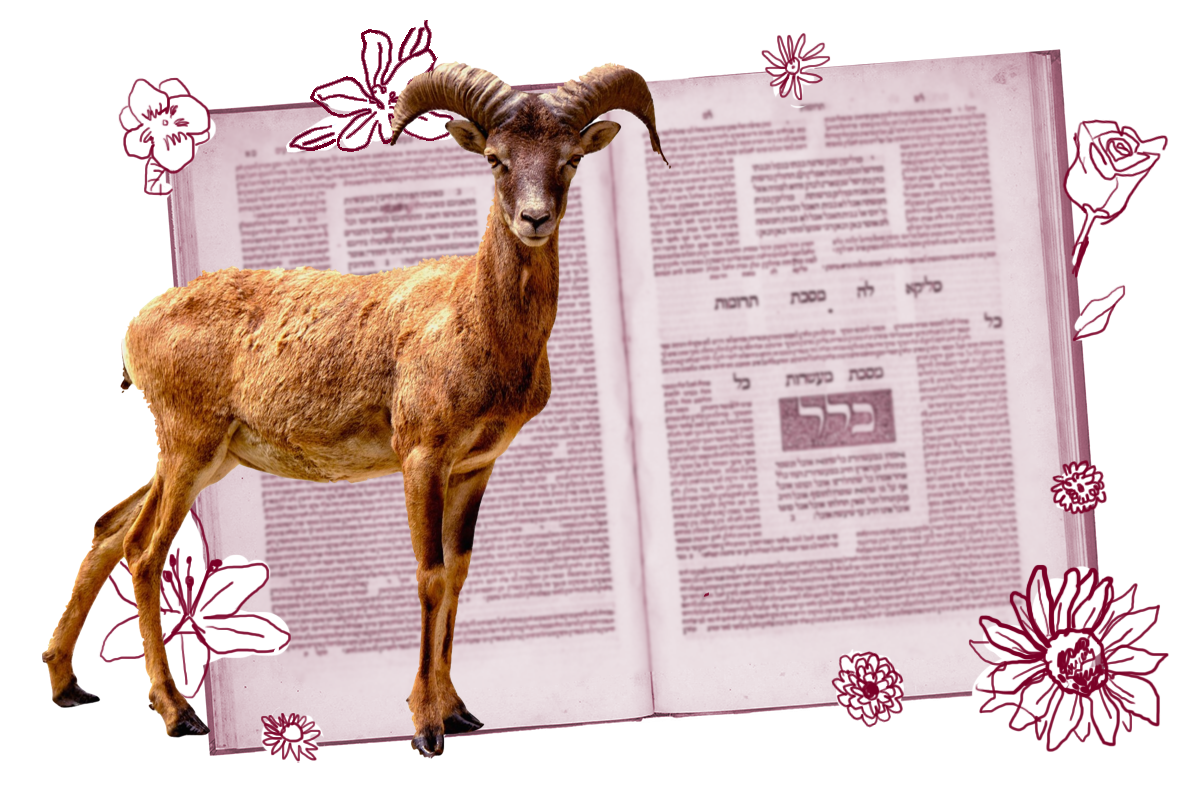Yoma is the sixth tractate of the Talmud, and it deals with the laws that govern Jewish observance of Yom Kippur in Temple times, many of them relevant to modern observance.
The word “Yoma” means simply “the day” and this hints to the significance of Yom Kippur. It is an annual opportunity for the entire community of Israel to perform teshuvah (repentance) and bring themselves into right relationship with God and one another. The awesome potential this day holds cannot be overstated. When the Jewish people has squandered its relationship to God it becomes lost and in grave danger. By coming back into divine favor, the people stand to flourish. Yom Kippur is therefore literally a matter of life and death.
The basis for the Yom Kippur ritual, as exposited by the Talmud, is Leviticus 16, which describes an expiation ritual that Aaron, the first high priest, performed after his two sons committed a sin so heinous that God smote them. It involves the sacrifice of a bull and two goats, one of which is offered as a sin offering while the other is given “to Azazel.” (The tractate discusses who or what Azazel might be.) It also involves offering burning incense and the blood of those sacrifices inside the Holy of Holies, the most sacred chamber of the Temple, which is entered only on Yom Kippur and only by the high priest.
Yom Kippur is arguably the most ahistorical of the Jewish holidays. It does not relive a grand moment from the past like the Exodus from Egypt (Passover), the revelation at Sinai (Shavuot), narrow escape from genocide (Purim), purification and rededication of the Temple (Hanukkah), or the creation of the world (Rosh Hashanah). Nor does it commemorate a communal tragedy (Tisha B’Av). It’s not even an obscure tax deadline turned festival (Tu Bishvat). Though Yom Kippur perhaps began when Aaron first made expiation for the sins of his sons, Yom Kippur is not liturgically tied to an historical event. It falls on neither the new moon nor the full moon, like most other Jewish celebrations, but on the tenth of the lunar month. It always looks forward, from the present moment to the coming year.
What makes Yom Kippur remarkable is the idea that on this one day each year the Jewish people should muster all the sanctity it can to inspire God’s favor. This was accomplished by what Rabbi Adin Steinstaltz refers to as a confluence of three kinds of sacredness: person, place and time. On this most sacred of sacred days (Yom Kippur is called Shabbat Shabbaton, the Sabbath of Sabbaths) the high priest (the most sacred of sacred officials) enters the Holy of Holies (the most sacred space in the Temple and therefore the world). There, under the prospect of great danger, he performs the rituals that will atone for the entire community.
Tractate Yoma is a guide to this ritual. Its focus is predominantly on the high priest and his duties for that day. In the first chapter, we learn how the high priest spends a full week preparing for this duty, including careful training, and what contingencies are drawn up in case he is unable to perform this awesome task. In the second and third chapters, the Talmud pivots to ordinary tasks that were performed every day in the Temple, including Yom Kippur, and the lottery that was used to assign priests to these tasks. In chapter four, the Talmud begins to delve into the special services just for Yom Kippur. This starts with the selection of two goats, one of which will become a sin offering and the other designated for Azazel and sent off into the wilderness. Which goat is assigned to which fate is determined by a lottery, as described in detail. This chapter also deals with the sacrifice of the bull and collecting coals for incense and transporting them to the Holy of Holies.
Chapter five brings us deeper into the Holy of Holies, discussing the way that the high priest offered incense and sprinkled the blood in that chamber. The rabbis explain what was found there. In the First Temple, the Holy of Holies housed the ark of the covenant, which was lost by the time of the Second Temple — this Holy of Holies had only a foundation stone. In addition to offering incense, the high priest sprinkles blood (what some scholars refer to as “sacred detergent” because it cleans and purifies) from the Yom Kippur sacrifices.
In chapter six, we return to the laws of the scapegoat which is ultimately sent into the wilderness. Chapter seven deals with public Torah reading on Yom Kippur and other sacrifices brought that day as well as the high priest’s ritual immersions and garment changes throughout the festival.
In the eighth and final chapter, the tractate finally broadens its focus from the high priest and the all-important Temple ritual to consider mitzvot of Yom Kippur relevant to all Jewish people. In particular, work is forbidden and people are supposed to afflict themselves on this day. The rabbis understand “self affliction” to mean fasting from food and drink as well as abstention from such comforts as wearing leather, bathing, anointing with oils and sex. This chapter also considers the effectiveness of the Yom Kippur ritual, broadly concluding that personal repentance is necessary in addition to the once-a-year sacrificial rites. To that end, five recitations of the Amidah, the central prayer of Judaism, are prescribed for this day (ordinarily there are three) as well as repeated communal confessions.
Yom Kippur, as described in this tractate, was a monumental tas, particularly for the high priest representing the people but also for all people required to participate in true self-affliction and teshuvah. But the payoffs were extraordinary — a clean slate with the Almighty and the promise of another year of life.
The post Summary of Tractate Yoma appeared first on My Jewish Learning.




